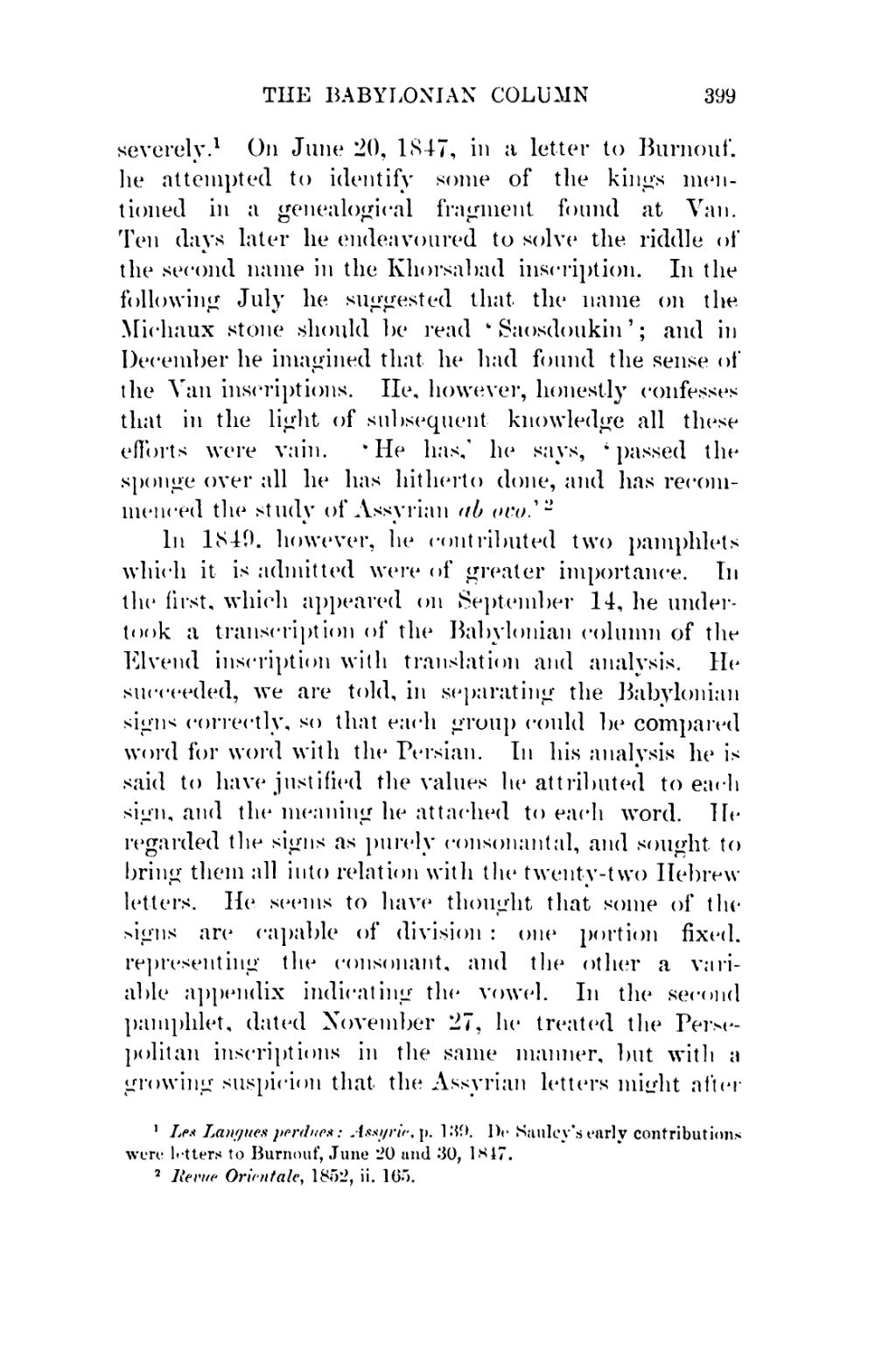severely.[1] On June 20, 1847, in a letter to Burnouf. he attempted to identify some of the kings mentioned in a genealogical fragment found at Van. Ten days later he endeavoured to solve the riddle of the second name in the Khorsabad inscription. In the following July he suggested that the name on the Michaux stone should be read 'Saosdoukin'; and in December he imagined that he had found the sense of the Van inscriptions. He, however, honestly confesses that in the light of subsequent knowledge all these efforts were vain. 'He has,' he says, 'passed the sponge over all he has hitherto done, and has recommenced the study of Assyrian ab ovo.'[2]
In 1849, however, he contributed two pamphlets which it is admitted were of greater importance. In the first, which appeared on September 14, he undertook a transcription of the Babylonian column of the Elvend inscription with translation and analysis. He succeeded, we are told, in separating the Babylonian signs correctly, so that each group could be compared word for word with the Persian. In his analysis he is said to have justified the values he attributed to each sign, and the meaning he attached to each word. He regarded the signs as purely consonantal, and sought to bring them all into relation with the twenty-two Hebrew letters. He seems to have thought that some of the signs are capable of division: one portion fixed, representing the consonant, and the other a variable appendix indicating the vowel. In the second pamphlet, dated November 27, he treated the Persepolitan inscriptions in the same manner, but with a growing suspicion that the Assyrian letters might after
